LED ZEPPELIN BY LED ZEPPELIN & PETER GRANT BOOK REVIEWS/EVENINGS WITH LATEST/LZ NEWS/TBL ARCHIVE -LED ZEPPELIN III PART 2/NATIONAL ALBUM DAY/CODA/DL DIARY BLOG UPDATE
Latest book review round up:
Firstly some reviews and feedback for the official Led Zeppelin By Led Zeppelin book:
LED ZEPPELIN BY LED ZEPPELIN
Reel Art Press, released October 9, 2018
A commentary by Larry M. Bergmann, Jr.
Of all the things we’ve known were coming during this 50th anniversary celebration, this was (so far, anyway) the one I was most anticipating. Of course we’ve had many photo books across the years, and Led Zeppelin were nothing if not photogenic. Most of the previous photo books on the band hit the mark in their own way, but I had high hopes for this because the band were personally invested in putting it together, and of course they would have had access to the various photographers, as well as their own personal archives. When I received my copy, I anxiously but carefully unpackaged it as I used to do when one of their original LPs was released.
Note: Spoilers lay ahead, so forewarned is forearmed… Immediately upon opening Led Zeppelin by Led Zeppelin, we are graced on page 2 by a sort of contact sheet containing 9 photos of the band, and based upon the haircuts of Robert Plant and John Paul Jones in particular, I’ll hazard a guess that this is the first photo shoot ever undertaken by the group. In my 43 years of being a Zep obsessive, I had never seen even one of these photos before. Right off the bat, the book grabs one’s attention!
That said, this seems an opportune point to mention that of course there are many familiar images in this tome which most diehards will have seen many times. That seems almost unavoidable in an enterprise such as this, and of course some of the iconic images had to appear here to make the book as comprehensive as possible.
Some of the highlights for me, there’s a great shot of Jones and Page backstage warming up prior to the Marquee gig in October 1968, as well as a shot of Bonzo with a cut on his face from the same evening (apparently he lost a fight with one of his cymbals).
There are terrific outtakes from the London photo shoot in November 1968, and the master shot that wound up on the back cover of the first album is also presented here sans text.
A funny shot of Peter Grant, Jerry Wexler and Jimmy in the warm Miami sun in November of 68, and from the same period a contact sheet of the contract signing with Grant and Page with Ahmet Ertegun in New York.
A great color shot of Page from the first ever US gig in Denver, Colorado on 26 December 1968.
Into 1969, we have a great shot from Uppsala, Sweden! An absolutely brilliant shot from the Supershow filming, with the camera at the foot of the stage. Plant cutting loose on the harp in Pasadena, California.
There’s a fantastic two-page spread with numerous photos of Bonzo doing his thing at Mystic Studios in Los Angeles, May 1969 during the sessions for LZII. The infamous (and eerie) “ghost” shot from Birmingham Town Hall…a terrific double page shot of Jonesy and Bonzo from the Paris 10/10/69 gig.
Nice individual close-up snaps of all four band members in New York in October 1969, from the time of the famous gig at Carnegie Hall (and wouldn’t that be a nice tape to avail itself during this anniversary period?!).
The original World War I shot of the Red Baron-led Jagdstaffel 11 Division of the German Air Force. The Flying Circus unwittingly posing for the cover of Led Zeppelin II some 50 years hence…
A double-page spread of the famous photo from the insanely great gig at Montreux in 1970 with the overly worshipful fan kneeling onstage in prayer directly in front of Jimmy Page.
A great double-page shot from The Forum in L.A. in March 1970 by photographer Chuck Boyd. Taken from behind the stage, the band is in full flight, and the crowd and arena interior are vividly depicted as the house lights are up. A friend of mine who’s an Angeleno and attended many gigs at The Forum back in the day once told me that sometimes during this era, the house lights would stay up, or be brought up at some point during the gig, as disturbances between the fans and the police patrolling the arena were not uncommon at the time. The exciting shots Boyd took at this great show are some of the best ever taken of the band.
From a few days later and on the other side of the US, we find some striking shots from The Spectrum in Philadelphia. Philly is one of the great rock towns in the States, and the crowds in The Spectrum were always wired and ready to party…
There’s a wonderful double-page shot of Plant with the crowd basically right on top of him from Tulsa, Oklahoma, August 21, 1970, and from the same gig there’s a very cool shot of Jimmy taken from the rear of the stage, which finds him seated and doing work during the acoustic set, resplendent in his yokel hat he had taken to wearing during this era. From the following evening we get a great double-page look at the famous Tarrant County Convention Center, Fort Worth, deep in the heart of Texas.
One of the nicer surprises in the book is an image of Robert’s hand-written lyrical draft of Bron-Y-Aur Stomp.
We see some excellent photos of the band in Honolulu, Hawaii in September 1971, the peak era of the band in the humble estimation of this writer. After this they would make their way to Japan and perhaps the greatest sequence of gigs they ever played. Interestingly (and rather unfortunately), that tour isn’t really represented in this tome, apart from a few shots from the event for peace the band attended in Hiroshima.
There’s a spectacular 1972 shot of Bonzo from Montreux, Switzerland. Bonzo’s Montreux indeed! We find a nice set of images from Hipgnosis taken at Grant’s Causeway in Ireland during the shoot for what became the cover of Houses Of The Holy.
Some of the most eye-opening shots in the book are a set of rather shaky yet terrific Instamatic-type images of Page and Plant’s 1972 journey to Bombay. One of the more interesting sequences of Zeppelin lore, and a trek which would pay dividends for the pair some 20+ years later when the Page/Plant project was born.
The record-setting stadium show in Tampa 1973 is well represented by an overhead photograph of the stadium and the crowd inside. The band hitting the “big time” in stride…
From the same period, we get a wonderful color shot of Jonesy onstage in Fort Worth, wearing his Alabama State Troupers t-shirt (picked up a few nights earlier in Mobile, one might guess), and an equally impressive image of Bonzo from a gig in Houston. Led Zeppelin takes the tiny state of Texas!
Another spectacular crowd shot avails itself in all its double-page glory from the famous gig at Kezar Stadium in San Francisco.
The band officially lets the Shepperton Studios cat out of the bag with a nice shot of Bonzo recreating his Madison Square Garden drum work to patch the visual holes for The Song Remains The Same. And some nice photos of Jimmy in the various stages of his “Hermit’ makeup for the same venture…
One of my absolute favorite photographs from this tome is of one John Freaking Baldwin and his monster bass at the Chicago Stadium (which was actually an arena) on Twenty-Two January, Nineteen-Hundred and Seventy-Five! Superb!
We get a wonderful five page spread of some of the original artwork mock-ups for what would become the iconic cover and overall package of Physical Graffiti, a good little album if memory serves…
From March 25, 1975, we get a thrilling color onstage shot of Jimmy Page in all his glory at The Forum. The man could not have looked any more cool than he did during this era, he set the image that a preponderance of prospective guitar heroes have been striving for ever since.
From a couple of months hence, we get a brilliant double-page spread of an empty interior of Earls Court, awaiting the landing of the lead airship… Great shots follow of all four of the band in action at said venue, culminating in another iconic full color blast of Page, arms high in the air with Les Paul aloft, absolutely sublime in his most decisive stage-garb, the unparalleled black dragon ensemble.
The author found the six-page spread devoted to the Presence album/time period one of the more wonderful parts of the book.
A great Penny Smith shot of the band lined up and having fun at Manticore Studios in January 1977 graces page 296. The images Smith captured at this session are some of the most relaxed and light-hearted shots ever taken of the band, and are among my personal favorites. Rounding out the Manticore set are some interesting shots of Robert seemingly out back of the theatre talking to a few gents who just seem to be hanging about, enjoying a libation or two…
There are two great double-page spreads from the vast Pontiac Silverdome outside of Detroit on April 30, 1977. One of them is a stunning shot of the enormous crowd, approximately 80,000 strong. And as it’s the band’s 50th anniversary, when might we expect the video of this gig to appear…?
There’s another impressive double-page image of the crowd at Oakland Stadium in July 1977, the final two Zeppelin concerts in the States. At the end of this sequence, there’s an interesting and appropriate quote regarding this era from Robert Plant.
The classic overhead image of the crowd at Knebworth appears here, as well as some cool shots from the gigs. A quibble, it would have been nice to see more than two images here of the Copenhagen “warm-up” shows in this passage, especially from the second night, which is possibly the best show the band played post-1973. But I digress… More Knebworth, with a double-page contact sheet spread, adorned with numerous engaging images of the band and crowd from what looks to be prior to the encores.
The 1980 tour seems to get the short end of the stick, but on pages 342 and 343 there are two winning shots of Page playing The Rain Song at Brussels, which is fitting as that may well be the best show of the tour. To mark Coda, there are some interesting draft designs for the album cover which didn’t make the final cut, but are nice to see here.
The book rounds out with some interesting O2 rehearsal shots, and then of course there are some spectacular shots of the gig itself…I particularly like the photos of Jones and Page on pages 366 and 367 respectively, and a very nice photo from behind the stage on page 370 of all four including Jason Bonham, basking in the applause at the end of the show.
Fittingly, this amazing photo journal winds up with a double-page spread of the blazing and amazing O2 “Led Zeppelin” digital sign, a superbly updated version of the famous sign of 32 years prior, which of course had been illuminated by light bulbs…
The book concludes with a 17-page section of Annotations, which finds the band members relaying memories and information in conjunction with some of the images depicted in the book. I did not yet read that section, but it looks likely to be interesting to say the least.
There is one final image at the end of the book, the well-known Neal Preston shot of the band getting ready to take the stage in Dallas on the opening night of the 1977 US tour. Comme il faut…
One quibble with the book is that the binding strikes me as a bit weak. That said, as I went thru it several times, I imprudently had it in my hands and on my lap. It’s a heavy book and probably should be placed on a flat surface and leafed through that way.
Reel Art Press did a nice job with the presentation, and the band deserve credit for putting the time into creating such a treasure. And the folks at Reel Art Press are alright in my book as they are getting ready to release Once Upon A Time In The West: Shooting A Masterpiece by Christopher Frayling, a book about the classic Sergio Leone film which just happens to be high on my list of all time favorite films.
And, oh yeah, Led Zeppelin and their new book are pretty high on my list too.
Larry M. Bergmann, Jr.
Evenings has shipped from the UK, according to Amazon, so my comments on it are pending its arrival stateside.
In the meantime, Led Zeppelin by Led Zeppelin arrived by post last evening and its an impressive volume. Large enough to make a nice coffee table book, but far nicer than any coffee table I’ve ever owned.
As indicated by the publisher, this book is “printed on paper Condat matt Perigord, ECF, acid free and age resistant”. I don’t even remotely know what that means, but it sounds good. If only I myself had been acid free and age resistant, but that’s for another book.
Beautifully bound, adorned with the classic emblems from VI, full of surprises and affirmations. The visual evolution of the band. The jarring visage of Peter Grant in a suit and tie meeting with Ahmet Ertegun, looking like a young Tony Soprano. The rarity of JPJ sporting a five string Fender bass in early 73. All the poignant images of John Bonham, on and offstage. And the sheer dynamism of Plant and Page, defining rock star visages.
The quotes from each band member grace the period photos, many previously unseen, and are presented in what I would call the familiar Zeppelin font. Each personality shines through their written words. Such as this one from John Paul Jones:
“I arrived by helicopter. A Hell’s Angel said: ‘We’re your transport”. I arrived at the gig on the back of a hog with a Cowboy hat. One of my better entrances”
Or Robert Plant, with brutal honesty:
“By the time of Oakland in 77, it wasn’t there. But it was there at the O2”
Or perhaps this, in summation of his Zeppelin career:
“There were no instructions in the box we opened. So rough and ragged, joyous and ecstatic, and….gone”
Led Zeppelin by Led Zeppelin is truly by Led Zeppelin, a fine capstone to the greatest of rock bands.
Ed – Washington DC
……………………….
Here is Chris Charlesworth review of the Mark Blake’s forthcoming biography of Peter Grant – Bring it On Home Peter Grant, Led Zeppelin and beyond: The Story Of Rock’s Greatest Manager (Little Brown Books.)
Myths and legends are like chalk and cheese. In the Oxford English Dictionary a myth is defined as ‘a widely held but false belief or idea’ while a legend is ‘an extremely famous or notorious person, especially in a particular field’. Peter Grant straddles the two and, perhaps bearing this in mind, Mark Blake prefaces his biography of the man with a quote from Oscar Wilde, ‘The truth is rarely pure and never simple’, which is both astute and playful at the same time.
The problem with writing about Grant, a man I knew but not well, is how to separate fact from fiction, yet at the same time produce a readable book that entertains sufficiently to make you want to keep turning its pages. Bring It On Home did that alright, largely because instead of being pedantic about separating fact from fiction Blake has wisely allowed his readers to make up their own mind about a few of the more outlandish claims that were made by, or on behalf of, Grant. Was he raised in abject poverty? Probably. Was he amongst those who dangled Robert Stigwood from a fourth floor window? Maybe. Did he carry huge wads of cash? Yes. Did he address as Popeye an American sailor who hassled Jimmy Page? I hope so. Was he as violent as some people claim? Probably not. Did he weigh 300 lbs? Yes. Was he in thrall to Page? Probably. Was he a good father? Doubtful. Did he lose the plot? Yes. And so it goes on, scattering enigmas like notes in a Page guitar solo.
Bring It On Home is not the first biography of Peter Grant. That honour belongs to my former Melody Maker colleague Chris Welch who in 2001 wrote The Man Who Led Zeppelin, which I commissioned and edited for Omnibus Press. It is to Blake’s credit that although some information is bound to be repeated, very little from Welch’s book appears in Bring It On Home. It isn’t even mentioned in the extensive bibliography and Welch, who wrote about Led Zeppelin as much as any other writer from the music press in the 1970s, is barely mentioned. This indicates that Blake has not only been selective in his research – which is extensive – but is resolved not to plagiarise. Others in his trade are rarely so scrupulous.
What Blake has going for him that Welch lacked is the co-operation of Grant’s two children, daughter Helen and son Warren, without whom he would have had to rely on a lot of the secondary research that, alongside his own experiences, fed Welch’s book. Both Grant’s children contribute extensively, offering both opinions and facts unavailable to previous Led Zeppelin biographers whose books invariably covered Grant’s life as a sub-plot. What we learn, unsurprisingly, is that home life with the Grants was not one of quiet domesticity, that their father was rarely off duty and, even when he was, if the phone rang and Jimmy Page was on the other end of the line he jumped to it.
Helen and Warren’s participation ensures that the book is not just another Led Zeppelin book in disguise. Although Blake cannot help but tell the group’s story within his narrative, he diverts the attention away from them and back to Grant sufficiently for the book’s primary focus to remain intact. Though it lacks any new testimony from Page, Robert Plant or John Paul Jones, he’s secured fairly blunt interviews with many of those who worked for Grant, including second-in-command Richard Cole and some who remained by his side after the group’s demise. Their testimony confirms that it took a series of dreadful blows – his divorce, the 1977 Oakland incident, the death of Bonham, heroin addiction, what he viewed as betrayal by Page and Plant – to fell him, and it took him almost a decade to get back up again. After all, as he said himself, once you’ve managed Led Zeppelin what else is there to do?
The book also benefits from an interview Grant himself gave shortly before his death to a researcher gathering material for the film that was to have been made by Malcolm McLaren. This has not been published before and we can safely assume that at this stage in his life Grant was likely to be more forthcoming about controversial issues. Some of this material, I am reliably informed, has been held back on the advice of lawyers.
Nevertheless, the book contains fresh details of Grant’s deprived childhood, his mother (who was over six foot herself), his lack of schooling, his early jobs, his entry into the music business as a driver of pre-Beatles rock’n’roll acts and his apprenticeship with Don Arden with whom he had a spectacular fall-out. Conflicts were par for the course in Grant’s business life and in most cases the combatants were eventually reconciled though not in Arden’s case, nor, of course, with US promoter Bill Graham. Blake gives the nasty Oakland business the prominence it deserves and in the preceding chapters makes it clear that Grant’s increasingly bad judgement at this stage of Led Zeppelin’s career, ie after 1976, was caused by overwork, an inability to delegate and paranoia brought about by his dependence on drugs. By this time the karma surrounding Led Zeppelin was at its worst and I’m rather glad that my relationship with them, such as it was, ended that same year.
Bring It On Home also offers some intriguing new information about the power structure that supported Grant. A shady character called Herb Atkin (aka Itkin), an ally of Grant’s equally shady US lawyer Steve Weiss, seems to have played a key role in oiling the wheels of Led Zeppelin’s unhindered accumulation of wealth and ability to avoid scrutiny from law enforcement. Unmentioned in any previous Led Zeppelin books, Atkin may or may not have been a CIA operative, or have had a connection with the mafia, but he certainly had useful contacts in high places. Atkin died in 1989 and Weiss in 2008, but Blake has uncovered evidence that both tried to take over Led Zeppelin from Grant after Bonham’s death; also that Weiss almost certainly benefitted financially from the group to an extent that Grant, and probably Page, were unaware.
All of these conspiracy theories make Bring It On Home an enthralling read and confirm the well-known dictum that power corrupts. The extent of the corruption is exposed graphically in Blake’s book as the King’s Road offices of Swan Song, Led Zeppelin’s record label, became abandoned, like the Marie Celeste, its artists left floundering. Meanwhile Grant himself disappears, for several years a virtual recluse at Horselunges, his 15th Century moated manor house at Hellingly in East Sussex. Those who visit, either summoned or otherwise, are often left waiting in a reception area for 48 hours before Grant gets out of bed to greet them. Sometimes he doesn’t even bother and they are sent away, their mission unfulfilled. Slowly he emerges from his self-imposed exile, slimmed down, humble even, and in the final few pages is acclaimed by the industry he helped to change for the better. Finally, in 1995, he dies from a heart attack in the back seat of Warren’s car. “He was too fine a man to dance with compromise,” said Plant. “He walked.”
Bring It On Home is not without its flaws. Grant’s wife Gloria, nee Cutting, is a under-represented which is surprising in view of their 14-year marriage and her children’s contribution to the book. What happened to her after she fled with Grant’s groundsman? We don’t know. According to Blake, Grant left Horselunges for a rented flat in Eastbourne. Was he broke when he died? We don’t know. Finally, according to Warren, the Inland Revenue were chasing Grant when he died. How much for? Did the stress of this contribute to his heart attack? We don’t know. Also, some of the stories sound to me like someone is gilding the lily, but then again without the stories the book would suffer.
It would probably be too much to expect Mark Blake to answer all these questions about a man who was certainly secretive yet at the same time loved to create myths about himself. It was the myths that turned him into a legend, but if a legend is as the OED defines, Grant certainly qualifies and Mark Blake’s fascinating book does nothing to dispel that.
Chris C’s See Just Backdated blog is at:
http://justbackdated.blogspot.com/2018/10/bring-it-on-home-peter-grant-led.html
……………………..
Some more feedback on the Evenings With Led Zeppelin book:
Evenings With Led Zeppelin
The first thing to say about this book is that it is very big and it is very heavy. Very apt as Led Zeppelin were (and still are) very big, and were also (sometimes) very heavy. Printed on quality paper, and hardback bound, 576 pages rammed solid with facts, information and illustrations. It was an essential decision to release the book as a hardback only, and whilst it means a higher list price (£40), more importantly the book will stand up to constant handling and reading, without falling apart as a paperback would have done. And this is very important, as this is not a book that can be picked up and read straight through from cover to cover (even for a hardcore trainspotter like me!). Far better to work through by reading or dipping into each tour, which is precisely what I will be doing.
It is extremely appropriate the band’s tour manager, Richard Cole, has written the forward to this book. He was with Led Zeppelin from the beginning, working as manager Peter Grant’s second in command until nearly the end (he only missed the final 1980 Tour Over Europe). And when Dave Lewis presented him with a copy of the book Richard was extremely pleased to read and be reminded of the record of his essential work with the band from the very start in 1968. The book concludes on pages 568 and 569 with an overview of both Peter Grant and Richard Cole’s vital and fundamental roles in ensuring that the band were not ripped off or attacked/harmed in any way (a distinct possibility in the crazy world of the 1970s).
The book starts by examining how Led Zeppelin came into being, rising from the ashes of the Yardbirds in 1968, and how Jimmy Page gathered around him three of the most talented musicians in the UK (and possibly the world), to create a band that would shortly conquer the world. The final months of the Yardbirds tours in early/mid 1968, as the band started to fall apart are covered. We then get detailed coverage, in words and illustrations, of their very first tour in Scandinavia in September 1968 (billed as the Yardbirds). Incredibly, an extremely talented young photographer, Jorgen Angel, was at the very first concert, and his black & white photos are a wonderful record of that historic moment. Each concert venue has been tracked down and a photo included, along with surviving posters, ticket stubs, and reviews in local newspapers. In fact it is the reviews (especially from the early days of the band), that provide extremely interesting reading. Some journalists understood what the band was trying to achieve, but many did not, and took delight in filing really acerbic and facile reviews, often strongly criticising the musical talents of band members. Full marks to Dave and Mike in publishing these reviews, it wold have been very easy and tempting not to do so.
Every tour that Led Zeppelin played on gets a chapter to itself. The research that has gone into this is the keystone on which the book is founded on. I was lucky enough to interview both authors at the official launch in London on the 28th September 2018, and again at the fan gathering that Dave and I organised in London on the 30th September, to mark the band’s 50th anniversary. This has given me a great insight into how vast (and I do mean truly vast) amount of painstaking research and combing through the archives all over North America and Europe has been done, largely by Mike Tremaglio. Every possible means have been employed to track down not only the correct facts, but also often the correct photos of them playing on stage as well, for every venue that they played at. Dave Lewis, working in conjunction with the designer Mick Lowe, has used his own vast knowledge of the band, to blend all this into an incredible work of scholarly research. Chris Charlesworth, the distinguished journalist who saw Led Zeppelin on tour many times, originally commissioned the book and has given his editorial advice.
This book is a monument to painstaking research and (often frustrating) looking for needles in a haystack, seeking out reviews in obscure US college underground newspapers. Chasing down photos, posters and ticket stubs, and verifying concert venues and dates. After each entry where there is an audience or soundboard recording extant, this is given coverage. Set lists whenever possible have been given (based on the recordings), and sometimes using the list of songs played and referred to in press reviews. Coverage is also given to concerts that were scheduled, but subsequently rescheduled or cancelled. And very importantly, corrections have been made to some audience recordings originally thought to have been a particular concert, but subsequent research has shown they are from a different show. The final section covers the reunions, up to the historic O2 Arena concert in December 2007, surely the last time that they will ever all play together. The book ends with a list of every concert played, and scheduled/rearranged/cancelled. The entries are colour coded to highlight whether a recording exists for that concert, and other information.
As I finish this review, I just picked up the book for a casual look through some of the pages. Each entry jumps out with the black & white and colour of the photos and illustrations, many of which I have never seen before. One of the many great joys of this book is looking at a tour, reading the entry and press reviews, and then being inspired to dig out the recording and listen to it. When I first received the book one of the concerts that leapt out to be listened to again (after many years since I first heard it), was the legendary Boston Tea Party show on 26th January 1969. And that is the beauty of this book, it spurs you into seeking out concerts to listen to once again, with renewed interest.
I have referred to the fundamental roles that Peter Grant and Richard Cole played in ensuring that Led Zeppelin were and remain the massive success they became. They quite rightly get credit for this in the book. However at the very end, on page 575 (penultimate page before the photo credits), there is the dedication of this book to the memory of John Bonham. On the left is a photo of the magnificent statue of him erected in his home town of Redditch in 2018, and very poignantly taken on his birthday, the 31st May. On the right is a photo of him, with a big smile on his face. His genius shines through still, 38 years after his passing, and Led Zeppelin would never have achieved the level of success they did without this giant of a drummer, the powerhouse driving them ever onwards and upwards.
Jules McTrainspotter /Underground Uprising – October 2018)
…………………………
First Thoughts About Evenings With Led Zeppelin
When I was growing up there were 2 kinds of music books; biographies, either salacious or sanitised, or tomes with lists of dry dates, catalogue numbers and chart positions. It was not until Mark Levisohn’s ground-breaking work about The Beatles that I saw it was possible to do both. Tell a band’s story through the data, but make it breath. Dave Lewis of course knew this before me, and from TBL mag to his chronicles of the 1980 Over Europe tour has kept the flame of Zep alive through the good and bad times. Now in conjunction with American aficionado Mike Tremaglio they have put together what is surely the last word on Zeppelin live, give or take a seismic shift in the Teutonic plates of the surviving band members.
Working together Elton and Bernie style across the Atlantic, this book traces every show, festival and happening Led Zeppelin were a part of; and a fair few that for one reason or another never went ahead. The dedication and detail to this labour of love is amazing, in short it’s a bit of an epic!
After a touching scene setting introduction from Tour Manager Richard Cole the first part of the book pieces together the jigsaw of the birth of Zeppelin from the ashes of the Yardbirds, detailing what is, and what will forever be speculation. Then it’s onto the meat of the book, Gig by gig a rundown of the venue, set list (where corroborated by audio) quotes from the band or their associates and contemporary press reaction, not all of it is complimentary. I particularly like the “then and now” thumbnails of venues, each supported by pictures of the buildings and many ticket stubs, courtesy of the legendary “Cliff the ticket man.”
Through this source material the story of the band on the road emerges, in direct reviews and between the lines. For example the review of Uppsala March 14 1969 reads more like a psychology essay than a gig appraisal. Two things are apparent to me. The sometimes chaotic nature of their meteoric rise, cancelled shows, missing equipment, shoddy journalism, and secondly how polarised the reaction to Zeppelin actually was. On the one hand a good many provincial US music writers could see the potential of Zep, that they were more than one trick ponies and would strike out in new and interesting directions, on the other, manly British hand, they were considered just too darn noisy. Perhaps it depended on the size of the venue, the mood the band was in, or indeed that of the reviewer, but when you ‘got ’ Zeppelin you really got it, and being on the inside of that circle made it feel extra special.
At this time of writing I’m only in mid 1969, somewhere in the US, but this is road trip I am going to enjoy. “Evenings With” is a must have for all Zep fans and a go to guide for any lover of music from that period. I still have a lot of reading to do, but I will not skip to Earls Court. I will not skip to Earls Court. I will not ski…
Ian Dixon
………………
Evenings With Led Zeppelin distribution latest:
The view in the TBL Distribution Centre…well the TBL hub near our kitchen actually…
I have been very busy packing the TBL limited signed copies – and let me tell you carrying them to the post office on my bike is not easy!
It is taking some time to get them all processed and out to the post office so their is a bit of a backlog building. I am aiming to have all UK copies out by early next week with US and Europe on the way by the end of next week. The 100 copies are selling well – if you want to order a copy of this run – individually numbered and signed by me – here is the link to order:
http://www.tightbutloose.co.uk/evenings-with-led-zeppelin-the-complete-concert-chronicle-book/
US availability:
There is now a link to order the book in the US via Amazon:
………………………….
Led Zeppelin News Update:
In conjunction with the Led Zep news site, each week I will be re- producing highlights from their weekly email update news summary. This goes out every Sunday. Sign up details are below. Many thanks to James Cook
Led Zeppelin
- This week saw the release of Led Zeppelin’s official photo book and also Dave Lewis’ “Evenings With Led Zeppelin” book. Look out for reviews of both books on the ledzepnews.com site soon.
Jimmy Page
- Jimmy Page was interviewed on CBS This Morning about the new Led Zeppelin photo book. You can watch the interview here.
- A new “On This Day” entry was posted on Jimmy Page’s website to celebrate the release of the new Led Zeppelin photo book. See it here.
Upcoming events:
October 16 – “Bring it on Home,” a new biography of Led Zeppelin manager Peter Grant, will be released.
October 25 – Robert Plant will perform in Cardiff, Wales.
October 26 – Robert Plant will perform in London, UK.
October 28 – Robert Plant will perform in Dublin, Ireland.
November 20 – The Japanese edition of the official Led Zeppelin photo book will be released.
November 29 – “Geddy Lee’s Big Beautiful Book of Bass”, which features an interview with John Paul Jones, will be released.
Many thanks to James Cook.
The complete Led Zeppelin News email goes out every weekend. To receive it each week sign up here:http://tinyletter.com/LedZepNews
Led Zeppelin News Website: Check out the Led Zeppelin news website at
………………………..
Terry Reid:
Just a heads up that Terry Reid will be appearing on Later with Jools Holland. He’s going to be on Tuesday, October 30th. It’s his first ever appearance on the show.
…………………………….
Led Zeppelin III 48th Anniversary TBL Archive Special Part Two:
In this second part of the TBL archive feature celebrating the 48th anniversary of the Led Zeppelin III album, the rehearsal tapes, related bootlegs and sleeve design come under the spotlight.
LED ZEPPELIN III: THE REHEARSAL TAPES:
In the early 1980s a series of Zeppelin rehearsal tapes began circulating on various bootleg CD’s. These tapes contained material prepared for their third and fourth albums plus Physical Graffiti, Presence and In Through The Out Door. Rumoured to have been sourced from Page’s own archive, they offered key insight into the way the band developed ideas from initial rehearsals to studio perfection. The extracts form from the Led Zeppelin III era were drawn from rehearsal sessions at Headley Grange and possibly the Bron Yr- Aur cottage itself.
The tapes included the following:
An initial acoustic attempt at The Rover. This has Page running through the basic instrumental chord structure of a song later to be electrified for the Stargroves sessions in 1972. There’s a primitive run through Poor Tom subsequently left off Zep III but later to emerge on Coda. It’s performed in a bluesy jug band arrangement and skips along at a faster pace than the official Olympic Studio take. “That’s about it,” exclaims Plant at the finish.
Another sequence features Page and Plant wading through five takes of That’s The Way. Take one is similar in feel to Poor Tom with ad-libbed unfinished lyrics. Take two is an incomplete extract, this time with more familiar lyrical content. Take three commences with the fade out refrain guitar coda used on the finished version. To add to the location atmosphere, a dog can be clearly heard barking in the background. For take five, Jimmy’s refrain guitar coda is now slotted between each verse. This arrangement is taken at a faster tempo and Robert sings the choruses slightly differently. Listening to these embryonic versions of one of the most successful cuts on the third album perfectly illustrates the transitional process that many of Led Zeppelin’s songs underwent during rehearsal.
A brief extract of Friends has Bonham on bongos and backing vocals from possibly Jones. Page can be heard working on the skeleton framework of his solo acoustic instrumental Bron-Y-Aur. A second take has Bonzo on bongos and Robert scat-singing against Page’s acoustic playing. In the background a child (possibly Plant’s daughter Carmen) can be heard giggling throughout the song. There’s another attempt at Poor Tom, with Bonzo tapping out that shuffling intro on bongos and an improvised vocal. Hey Hey What Can I Do, another Zep III leftover, is tried in an all-acoustic arrangement with chorus only structures. Backing vocals supplement Plant’s countryish singing.
An unreleased song in progress, I’m Gonna Be Her Man, in which Plant sings the aforementioned lyric in a vaguely Neil Young fashion closes with Plant commenting ‘’Sounds like the Martian Hop’’ -a reference to the 1963 US novelty hit by The Ran-Dells. On the tape Page then goes into an acoustic chord pattern. “Nice that, perhaps it needs four chords,” suggests Plant. Jimmy acknowledges that by creating the melody of Down By The Seaside. A lengthy period of acoustic jamming follows, with Page pulling out a few Hats Off To Harper slide runs, and picking in the best Bert Jansch tradition.
“How’s it begin?” Robert asks Jimmy, and the guitarist duly obliges by returning to the melody of Down By The Seaside. This lilting song of nature was originally conceived at Bron-Yr-Aur, and then recorded at Island studios for the fourth album. It eventually surfaced on Physical Graffiti. This early rehearsal try out finds Plant singing a slightly amended set of lyrics (‘The people turn and go’), and making two attempts to return to the main verses after the speeded up middle section. It all adds up to another fascinating glimpse of a future Zeppelin standard undergoing transition. Following Robert’s final crying vocal line on Down By The Seaside, Jimmy sows the seed of another future Zeppelin creation. During a spontaneous acoustic ramble, he can be clearly heard running through the jerky chord sequence of The Crunge, a full year before its proper studio recording and subsequent appearance on Houses Of The Holy.
Aside from the acoustic material there’s an early stab at Immigrant Song with Plant ad-libs the lyrics. A second attempt at Immigrant Song segues into a verse less ‘Out On The Tiles’. Bonzo’s forceful drumming is ample evidence of the major part he played in this song’s construction.
These fascinating rehearsal tapes have surfaced on various bootlegs notably Another Way To Wales on the Black Swan label, Tribute To Johnny Kidd And The Pirates on Scorpio and in the Studio Sessions Ultimate box set, also on Scorpio.
LED ZEPPELIN III RELATED BOOTLEGS:
‘’Led Zeppelin hammer Bootlegs!’’ proclaimed the headline on the front pages of the Melody Maker’s October 3rd 1970 issue. The story went on to reveal that certain London record shops were stocking Led Zeppelin bootleg albums –much to the disgust of Zep manager Peter Grant.
In one of the few niave statements of his career, Grant was quoted in the Melody Maker as saying.
”As far as I know there can be no Led Zeppelin tapes available.After hearing some time ago that there was going to be an attempt to bootleg some tapes of the band,I flew to America. We’ve managed to retreive all the tapes and we know nothing in existence that can be issued”.
When Grant heard that Zeppelin bootlegs were being sold from a shop in Chancery Lane in London, Grant and Richard Cole along with RAK management partner Mickie Most paid the proprietor Jeffrey Collins a visit. He questioned Collins on the Zeppelin album and with a little not so gentle persuasion made sure that said albums were quickly withdrawn.
Bootlegs though were here to stay and though the market would quickly go underground and exist mainly on mail order, Led Zeppelin titles began appearing at a rapid rate. The most famous of these was the product of two separate recordings made on the night of September 4th 1970 at live at the Los Angeles Forum.
The source that would became known as the album Led Zeppelin Live On Blueberry Hill was captured by a pair of West Coast bootleggers who’s previous credits included Dylan’s Great White Wonder set and The Rolling Stones LiveR Than You’ll Ever Be. The latter had been recorded on a Uher 4000 reel to reel tape recorder with 71/2ips inch reels and a Sennheiser 805 shotgun microphone. Unbeknown to them, a separate bootlegger known as Rubber Dubber also recorded the show and quickly issued it as a double bootleg album stamped Led Zeppelin Live Los Angeles Fourm 9-4-70.
The more common Blimp label version titled Live On Blueberry Hill (later to appear on the high profile bootleg label Trade Mark Of Quality) with a distinctive surreal cover insert came out within weeks of the LA show.
This scintillating Zeppelin performance, featured Immigrant Song, Since I’ve Been Loving You and Out On The Tiles from the yet to be released Led Zep 3. The Rubber Dubber version captured the acoustic performances of Bron Yr Aur and That’s The Way. Original vinyl copies of these titles are well sought after. The LA Forum show has subsequently appeared on countless on unauthorised double CD’s notably on the Sanctuary label and as a nine CD set via the Tarantura label representing all known tape sources. It remains one of the quintessential bootleg recordings.
Other Zep 3 related era bootlegs of note: Their celebrated performance at the Bath Festival in 1970 has long since been available on a poor sounding tape source. Recently a much clearer near complete audience recording has surfaced and distributed under the title The Boy Next Door . There also several recordings from their August/September US tour notably both the matinee and evening September 19th performances at Madison Square Garden. The afternoon show came out under the title American Woman (The Diagrams Of Led Zeppelin Vol. 8). The evening show appeared in 2004 on One More For the Road on the Boogie mama label. This is another key Zep performance. It features a rare live delivery of Gallows Pole within a medley of Communication Breakdown.
Studio outtakes of That’s The Way, Since I’ve Been Loving You, Hats Of To (Roy Harper) and a studio jam known as Blues Medley have been much bootlegged on CD initially on the Scorpio label as Studio Daze. That label was also the first to issue the Jennings Farm Blues outtake on the CD of the same name. Backing track only outtakes of Celebration Day, Out On The Tiles and Hey Hey What Can I Do have also surfaced on titles such as The Lost Sessions Volume 6 (Empress Valley).
LED ZEPPELIN III :THE SLEEVE DESIGN:
Aside from their musical success, by 1970 Led Zeppelin had also earned a credible reputation for how they presented their work. Concert posters for the group were diligently designed with the art schooled Page keeping a controlling eye over proceedings. In an era of iconic album cover art work, Zepelin reigned supreme. The striking black and white Hindenburg image designed by George Hardie was followed by the equally distinctive so called ‘’Brown bomber’’ gatefold sleeve put together by David Juniper for Led Zeppelin 2.
For their third release Page searched out the eccentric Zacron a former student of Kings Collage of Art who he had first met in the early 60s. Zacron had produced a variety of art work including A Window On London a painting with multi layered collaged panels. Graduating to the Royal Academy one of his designs experimented in a ‘‘volvelle’’ wheel rotation –the idea he would later develop for the Led Zeppelin 3 sleeve. In early 1970 Page commissioned Zacron to come up with a sleeve for their third album. Now a fine arts lecturer at Leeds University, on January 24th Zacron met with the band at their gig at the venue . In the early spring he spent time at each of the respective homes of the four members. He took a series of photos of each of them eventually selecting four individual images that would make up the back cover black and white group image. I was careful to get all the images of the band members right’ ’Zacron said years alter ‘’It was important to set up images which showed them as the giant force they were in music’’
The elaborate gatefold design employed a rotating wheel enabling the purchaser to circle through the various images of the group as they appeared in the relevant holes in the sleeves. This was based on his previous rotating wheel design. Other random images, ranging from off beat photos of Page, Plant Jones and Bonham to airships, butterflies, and planes with a predominant connecting theme of flight, adorned the white background of the sleeve. A meeting with Atlantic Records execs to determine the positing of the then all important Atlantic logo led him to gain freedom for it to be placed where he deemed it most appropriate within the design.
Page was initially unsure about the finished work. ‘’The sleeve was intended to be something like one of those garden calendars or zoo wheel things that tell you when to plant cauliflowers or how long whales are pregnant’’ he commented at the time. ‘’We ended up on top of a deadline and I think it was a compromise.’’ Deadline or not, the Led Zeppelin III cover has gone on to become one of the most iconic album sleeve designs of all time. Zacron sadly died in January 2012.
Written and compiled by Dave Lewis
………………………
National Album Day:
Here’s a round up of my input on National Album Day staged last Saturday – this info via my Facebook page. It was great fun sharing this event and reading people’s choices throughout the day. Here’s to next year’s event.
The countdown is on:
Update1:
Don’t forget at 3.33pm on National Album Day everyone in the UK is being asked to stop what they’re doing, sit back, relax and play an album of choice in full, from start to finish.
So which album to choose?
Here are some of my contenders…in no particular order..
THE WHO BY NUMBERS – THE WHO
TUSK – FLEETWOOD MAC
NO QUARTER UNLEDDED – JIMMY PAGE AND ROBERT PLANT
PICTURES AT ELEVEN – ROBERT PLANT
WHAT’S GOING ON – MARVIN GAYE
YOU CAN ALL JOIN IN – ISLAND RECORDS SAMPLER
OOH LA LA – THE FACES
HENDRIX IN THE WEST – JIMI HENDRIX
JONI MITCHELL –THE HISSING OF SUMMER LAWNS
STEVIE WONDER –TALKING BOOK
EASY RIDER SOUNDTRACK (1969)
LED ZEPPELIN 1 – LED ZEPPELIN
THE CONCERT FOR BANGLA DESH – GEORGE HARRISON & FREINDS
YOUNG AMERICANS – DAVID BOWIE
THE BEATLES – SGT PEPPERS LONELY HEARTS CLUB BAND
BAD COMPANY STRAIGHT SHOOTER
CODA – LED ZEPPELIN (1982)
LET IT BE -THE BEATLES (1970)
FRANK SINATRA -SONGS FOR SWINGING LOVERS
SIREN – ROXY MUSIC (1974)
FATE OF NATIONS – ROBERT PLANT (1993)
IT’S ONLY ROCK’N’ROLL – THE ROLLING STONES
TUBULAR BELLS – MIKE ODLFIELD (1973)
BRIDGE OVER TROUBLED WATER – SIMON & GARFUNKEL(1970)
FRAMPTON – PETER FRAMPTON (1975)
CARIBOU – ELTON JOHN (1974)
CROSBY STILLS & NASH – CROSBY STILLS & NASH (1969)
SOUND AFFECTS – THE JAM (1980)
IN THROUGH THE OUT DOOR – LED ZEPPELIN (1979)
COSMOS FACTORY – CREEDENCE CLEARWATER REVIVIAL (1970)
LED ZEPPELIN III – LED ZEPPELIN
THRILLER – MICHAEL JACKSON (1983)
WHITE ALBUM – THE BEATLES (1968)
BAND ON THE RUN – PAUL McCARTNEY & WINGS (1973)
PHYSICAL GRAFFITI – LED ZEPPELIN
ELECTRIC WARRIOR – T.REX (1971)
SPLIT – THE GROUNDHOGS (1971)
NEVER A DULL MOMENT – ROD STEWART (1972)
FILLMORE – THE LAST DAYS – VARIOUS ARTISTS (1972)
DUSTY IN MEMPHIS – DUSTY SPRINGFIELD (1968)
LED ZEPPELIN II – LED ZEPPELIN
IN A SILENT WAY – MILES DAVIS (1969)
BLIND FAITH – BLIND FAITH (1969)
THE DARK SIDE OF THE MOON – PINK FLOYD (1973)
A DAY AT THE RACES – QUEEN (1976)
WOODSTOCK – MUSIC FROM THE SOUNDTRACK – VARIOUS ARTISTS (1971)
LIVE AND DANGEROUS – THIN LIZZY (1978)
THE WHO – WHO’S NEXT (1971)
LET IT BLEED – THE ROLLING STONES (1969)
GEORGE HARRISON – ALL THINGS MUST PASS (1970)
MARQUEE MOON – TELEVISION (1977)
BORN TO RUN – BRUCE SPRINGSTEEN (1975)
BOB DYLAN –DESIRE (1975)
FRANK ZAPPA – HOT RATS (1969)
MILES DAVIS – KIND OF BLUE (1959)
LED ZEPPLIN IV – LED ZEPPELIN
ELVIS PRESLEY – ELVIS IN THE 70S: (1973)
HIT MAKER! BURT BACHARACH AND HIS ORCHESTRA (1966)
LED ZEPPELIN – LIVE ON BLUEBERRY HILL (1970)
LED ZEPPELIN – BBC SESSIONS – TRADE MARK OF QUALITY BOOTLEG (1971)
FRUIT TREE – THE COMPLETE RECORDED WORKS -NICK DRAKE
THE YARDBIRDS – GOLDEN EGGS – TMQ BOOTLEG (1974)
GOING FOR THE ONE – YES (1977)
WILD WOOD -PAUL WELLER
DETECTIVE – DETECTIVE (1977)
UNHALFBRICKING – FAIRPORT CONVENTION (1969)
LAYLA AND OTHER ASSORTED LOVE SONGS – DEREK AND THE DOMINOES (1970)
NO SECRETS – CARLY SIMON (1975)
BORN TO RUN –BRUCE SPRINGSTEEN (1975)
BOB DYLAN – BLONDE ON BLONDE (1966)
STOP THE CLOCKS – OASIS (2006)
LED ZEPPELIN – SOUNDTRACK FROM THE SONG REMAINS THE SAME
REMASTERS – LED ZEPPELIN
PRESENCE – LED ZEPPELIN
EARLS COURT VOL 1 AND 2 – LED ZEPPELIN
AND MANY MORE!
Update 2:
National Album Day: The DL Choice…at 3.33pm..and on the player…
It of course has to be Led Zeppelin…and as it was being recorded and mixed 50 years ago this month the first Led Zeppelin album seems the most appropriate choice.
I am going to listen to the entire contents (the1969 original UK pressing) focused on that and nothing else…I will report back my 50 years on findings…take it away chaps…
Update 3:
National Album Day: The DL Choice…thoughts on listening to Led Zeppelin I
GOOD TIMES BAD TIMES
At two minutes, 43 seconds, this is a perfectly compact overture to set the scene. Bonham and Jones hold down a powerful and inventive rhythm section, and when the time comes, Jimmy flexes the Telecaster (played through a Leslie speaker to create that soaring effect) in a late Yardbirds-era fashion. From the onset though, it’s Robert Plant’s vocal that strikes home instantly. He executes all manner of vocal somersaults with the lyric but never loses control. Bonham’s intricate bass drum patterns, the rolling bass lines from Jones and Page’s fluttering guitar solo were all applied with a gusto that still completely overwhelms. Memories of the 02…
BABE I’M GONNA LEAVE YOU
Within three minutes of this album playing we have an acoustic guitar – proof that this band were not going to be all about Marshall amplifiers. The tension here is tangible – the first flowering of light and shade – there would be much more to come…
YOU SHOOK ME
Willie Dixon’s’ blues played with what was then a new found dynamism. The expansiveness of the whole sound here is still incredible. An early example of Jimmy’s mastery of the studio. From Jones’ swirling organ through Plant’s harmonica wailing to the point where Jimmy’s solo cascades around Bonzo’s stereo panned tom-tom attack, this is prime vintage Zeppelin. And the final incessant by-play between Page and Plant that leads out of the track is a another masterful production technique, and one that would be further emphasized on stage.
DAZED AND CONFUSED
Straight into Dazed…based on Jake Holmes original composition. As we all know Jimmy and co were not adverse to borrowing a few licks here and there as much as they were often derivative it always came out sounding completely fresh. Again the interplay amongst them all is just breathtakingly….flippin heck they were good….
Turn over…side two…
YOUR TIME IS GONNA COME
Electric guitars, acoustic guitars and then church like Hammond organ and what an intro…
This showcases how important John Paul Jones was going to be – beautiful acoustic guitar overtones, incredible vocal, John Bonham so inventive in his playing…and that heavy chorus – not to mention some sublime pedal steel guitar – they just had everything….
BLACK MOUNTAIN SIDE
The fade into this is another stunning moment. The melody on this Page virtuoso acoustic guitar instrumental owes more than a passing nod to a traditional folk song sung in the folk clubs by Anne Briggs. It was recorded by both John Renbourn, and Bert Jansch, The piece also featured a rare cameo appearance from tabla player Viram Jasani.
COMMUNICATION BREAKDOWN
Bang….Communication Breakdown – the energy is just phenomenal – come on! Punk Rock before it was invented..
I will never ever forget them performing this in front of my very eyes as a surprise encore on the final night at Earls Court….
I CAN’T QUIT YOU BABY
Crystal clear ambient sound here – John Bonham right upfront in the mix… Jimmy is just incredible …
HOW MANY MORE TIMES
That jazz intro is another moment as is Jimmy’s slashing wah wah – and then it’s off into all manner of fun…Oh Rosie ,The Hunter..phew!.
SUMMARY:
50 years on this album has lost none of its unique power. Led Zeppelin would go on to make more inventive and adventurous records but this first recorded statement is a blueprint for what would follow.
Playing it loud and proud this afternoon has been a cathartic experience – it re-emphasises why I spend so much time listening and writing about this musical phenomenon. The were,are and always will be the best. Playing Led Zeppelin I uninterrupted has been a joy and not a little moving- and that is what music can do to you..
Thank you National Album Day….it’s made me determined to listen to more records focused and uninterrupted…not easy of course in this mad busy old world …but as experienced in the last 45 minutes..something that is very good for the soul
Dave Lewis – October 13, 2018
……..
Coda tribute band Octobers 18 London gig:
The Coda tribute band are performing a special 50th Anniversary gig in London on Thursday October 18. The venue is the O’Neill’s bar in London’s Wardour Street – just along from where Led Zep performed at the Marquee Club 50 years to the day. The good lady Janet and I are aiming to be at this one with a pre TBL meet in the Spice Of Life pub before hand.
More details here:
http://www.codaledzeppelintributeband.co.uk/gigs.html
DL Diary Blog Update:
A busy week and in particular a very busy Saturday. Alongside the National Album Day activity, in the morning I attended Adam’s early kick off for Bedford Albion v Sandy. He was on very good form netting twice – one a peach of a free kick -captured in this pic in a very comfortable 9-o victory. In the evening I attended the annual Silver Jubilee school reunion with my childhood friend Sean D’arcy.
This is the second year I have attended and it was a great night. A larger turn out than last year and it was great to see so many old faces. I also had a very nice surprise in wading through the many old photos that were on display. For there in a girls school line up in the mid 60s, was a picture of my late sister Margaret with her then class mates – a very poignant photo indeed and one I had never previously seen.
I was at the school from 1968 to 1972 – it was a secondary modern school with boys separated from girls. It was a tough working class school with a high level of discipline. I have only fond memories of my time there – I loved being involved in all the sport on offer especially the football team where I was goalkeeper. I was not that academic really -I was useless at Maths but I did have an affinity for English. When the opportunity came to leave at 15 I took it rather than stay on to do exams in the fifth year. So in June 1972 I left with no qualifications and took a job as a stockroom assistant in British Home Stores. I thoroughly enjoyed being out in the big wide world and to be earning money to fund my passion which was listening to and reading about music. I knew I wanted to work in music in some way and that opportunity presented itself in October of 1974 when I saw a job advertised for a job working on the counter of the WH Smith record department. Thus began a hugely fulfilling career in that sector that lasted for the next 35 years.
Following the Silver Jubilee reunion, I had to pick up a TBL T shirt a couple of days later from the printing firm which is not far from where Silver Jubilee stood – the school was pulled down in the 1990s. I had a very nostalgic ride around the area which is now a housing estate. Memories indeed…
On a very wet Sunday I made time to watch a film – I am not a big film fan but I do love the British Film Institute’s series of films from the 1960s and 70s. I watched the classic Saturday Night and Sunday Morning starring the brilliant Albert Finney. This 1960 film centers on the exploits of a a young factory machinist who spends his weekends drinking and partying. It’s factory setting and working class kitchen sink drama approach was another throwback to the Silver Jubilee school era. It was a weekend where my roots, childhood and youth came vividly into focus and I felt all the better for it…
Dave Lewis – October 17 , 2018
Until next time, have a great weekend
Website updates written and compiled by Dave Lewis
with thanks to Gary Foy, Mike Tremaglio and James Cook
Follow TBL/DL on Facebook:
https://www.facebook.com/tightbutloose.loose
The TBL/DL Facebook page has regular updates and photos – be sure to check it out


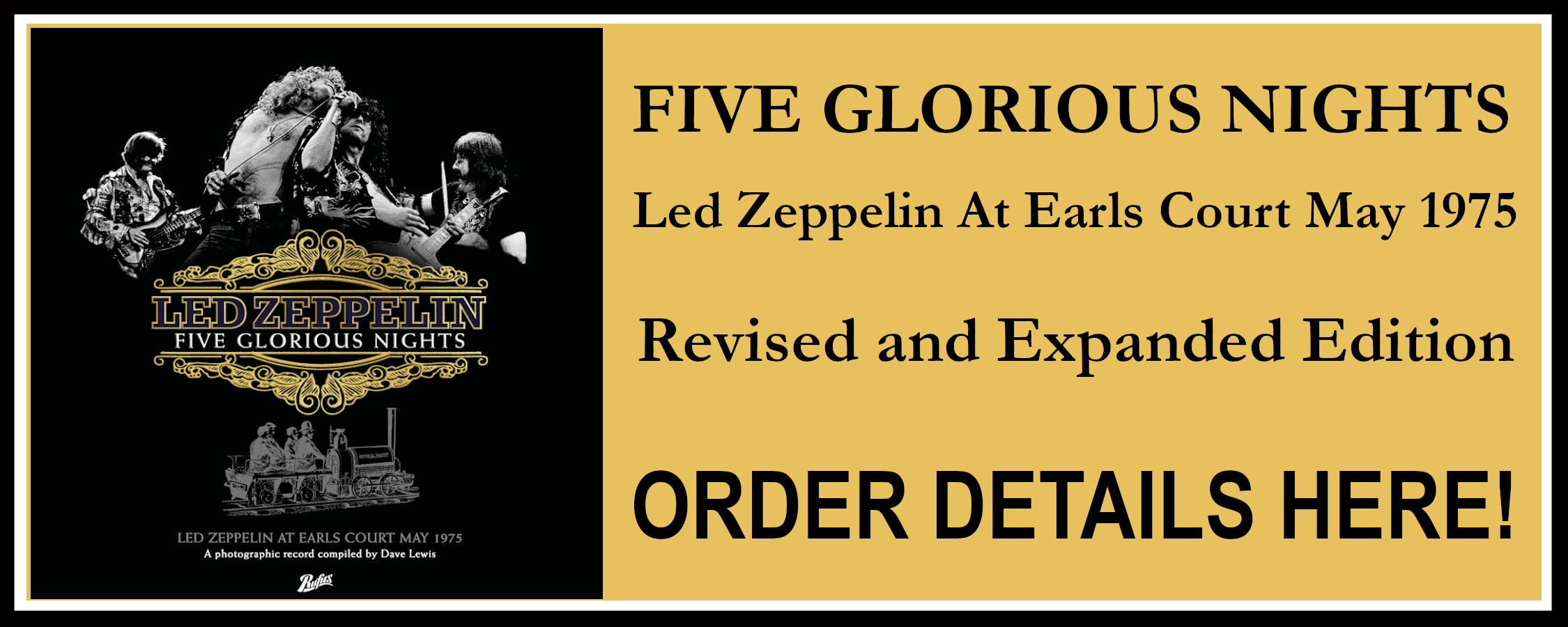


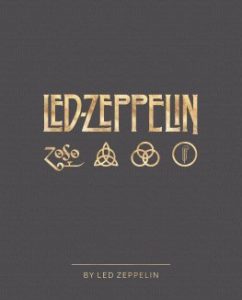
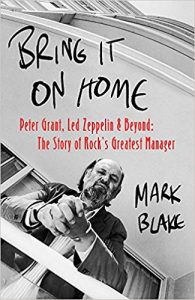
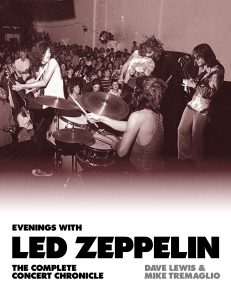
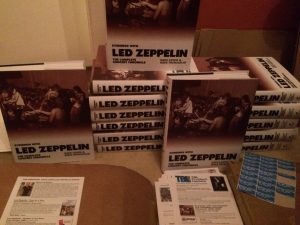
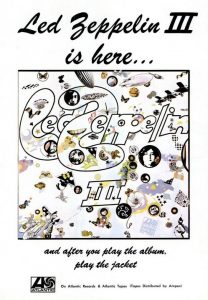
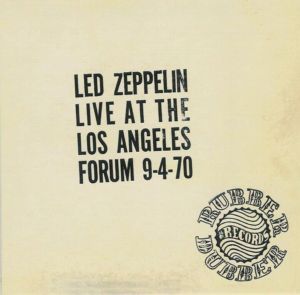
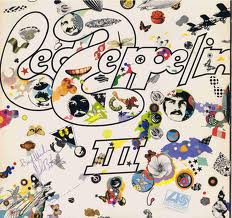

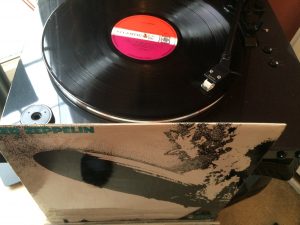
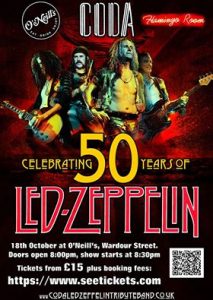
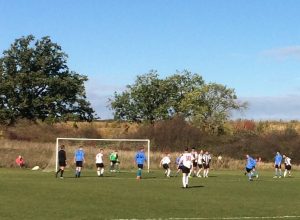
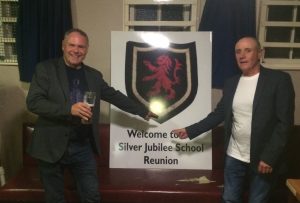
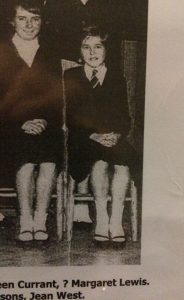
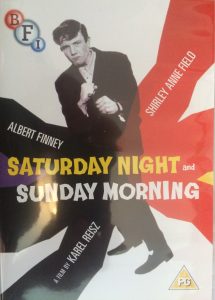









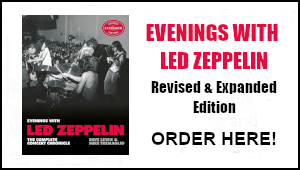
Leave your response!